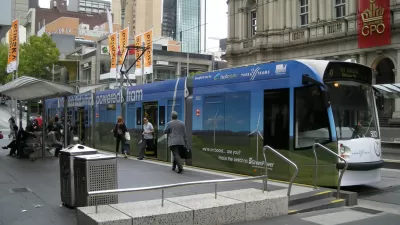As the world's cities grow ever larger, local governments constantly ask themselves which is better: amalgamating into one metro-wide government, or maintaining autonomy among fragmented jurisdictions? The answer remains unclear.

The typical metro area is not one city but rather many cities, sitting cheek-by-jowl and jostling for funding, residents, business activity, power, and prestige. Some metros, like Toronto and Indianapolis, decided that this situation is untenable, with localities trading some of their autonomy for membership in a region-wide government. Others, including most cities in the United States, maintain dozens, or even hundreds, of independent jurisdictions within areas that otherwise function as single cities. The Greater London Authority is an example of a region that tries to strike a balance.
The pros and cons are endless, with none clearly outweighing the other. Fragmentation can lead to segregation and unhealthy competition between smaller cities. Consolidation can mean that one interest group can dominate an entire region, for better or worse. In the developing world, cities are growing so large that urbanized areas are running roughshod over existing boundaries. A World Bank report indicates that 135 of 350 urban regions surveyed in East Asia have no dominant city.
"'Often, administrative boundaries between municipalities are based on centuries-old borders that do not correspond to contemporary patterns of human settlement and economic activity,'" the OECD observed in a recent report. The thinktank argued that governance structures failed to reflect modern realities of metropolitan life into account.
"Fragmentation affects a whole range of things, including the economy. The OECD estimates that for regions of equal population, doubling the number of governments reduces productivity by 6%. It recommends reducing this effect with a regional coordinating body, which can also reduce sprawl, increase public transport satisfaction (by 14 percentage points, apparently) and improve air quality."
"Among those who stand to lose from regional government are minorities. In Ferguson, black residents were already under-represented in government relative to their population. But as a voting block they would find their strength heavily diluted in a merged government: Ferguson is more than two-thirds African-American, while St Louis County plus the city of St Louis together are about 70% white."
FULL STORY: What's the perfect size for a city?

Maui's Vacation Rental Debate Turns Ugly
Verbal attacks, misinformation campaigns and fistfights plague a high-stakes debate to convert thousands of vacation rentals into long-term housing.

Planetizen Federal Action Tracker
A weekly monitor of how Trump’s orders and actions are impacting planners and planning in America.

In Urban Planning, AI Prompting Could be the New Design Thinking
Creativity has long been key to great urban design. What if we see AI as our new creative partner?

King County Supportive Housing Program Offers Hope for Unhoused Residents
The county is taking a ‘Housing First’ approach that prioritizes getting people into housing, then offering wraparound supportive services.

Researchers Use AI to Get Clearer Picture of US Housing
Analysts are using artificial intelligence to supercharge their research by allowing them to comb through data faster. Though these AI tools can be error prone, they save time and housing researchers are optimistic about the future.

Making Shared Micromobility More Inclusive
Cities and shared mobility system operators can do more to include people with disabilities in planning and operations, per a new report.
Urban Design for Planners 1: Software Tools
This six-course series explores essential urban design concepts using open source software and equips planners with the tools they need to participate fully in the urban design process.
Planning for Universal Design
Learn the tools for implementing Universal Design in planning regulations.
planning NEXT
Appalachian Highlands Housing Partners
Mpact (founded as Rail~Volution)
City of Camden Redevelopment Agency
City of Astoria
City of Portland
City of Laramie




























